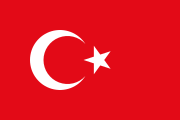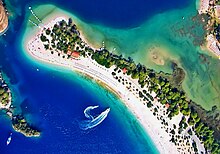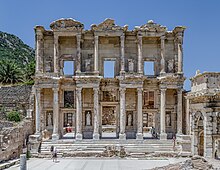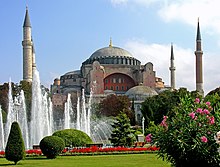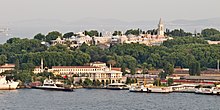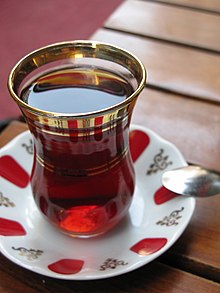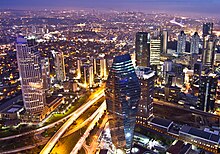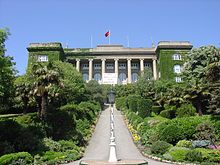
The 1923 population exchange between Greece and Turkey stemmed from the "Convention Concerning the Exchange of Greek and Turkish Populations" signed at Lausanne, Switzerland, on 30 January 1923, by the governments of Greece and Turkey. It involved at least 1.6 million people, most of whom were forcibly made refugees and de jure denaturalized from their homelands.
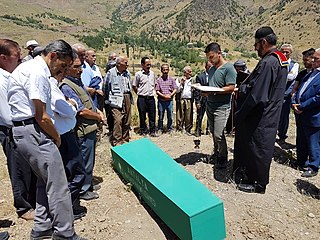
Assyrians in Turkey or Turkish Assyrians are an indigenous Semitic-speaking ethnic group and minority of Turkey who are Eastern Aramaic–speaking Christians, with most being members of the Syriac Orthodox Church, Chaldean Catholic Church, Assyrian Pentecostal Church, Assyrian Evangelical Church, or Ancient Church of the East.

The Catholic Church in Turkey is part of the worldwide Catholic Church, under the spiritual leadership of the Pope and the canonical leadership of the curia in Rome that is submitted to the Pope.

Christianity in Lebanon has a long and continuous history. Biblical Scriptures show that Peter and Paul evangelized the Phoenicians, whom they affiliated to the ancient Patriarchate of Antioch. Christianity spread slowly in Lebanon due to pagans who resisted conversion, but it ultimately spread throughout the country. Even after centuries of Muslim rule, it remains the dominant faith of the Mount Lebanon region and has substantial communities elsewhere.
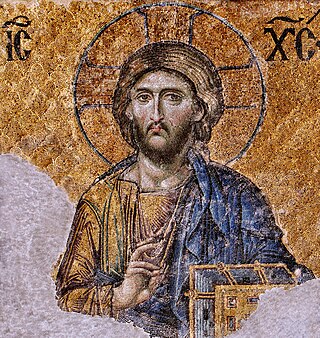
Christianity in Turkey has a long history dating back to the early origins of Christianity in Asia Minor during the 1st century AD. In modern times the percentage of Christians in Turkey has declined from 20 to 25 percent in 1914 to 3–5.5 percent in 1927, to 0.3–0.4%, roughly translating to 200,000–320,000 devotees. The percentage of Christians in Turkey fell mainly as a result of the late Ottoman genocides: the Armenian genocide, Greek genocide, and Assyrian genocide, the population exchange between Greece and Turkey, the emigration of Christians that began in the late 19th century and gained pace in the first quarter of the 20th century, and due to events such as the 1942 Varlık Vergisi tax levied on non-Muslim citizens in Turkey and the 1955 Istanbul pogrom against Greek and Armenian Christians. Exact numbers are difficult to estimate as many former Muslim converts to Christianity often hide their Christian faith for fear of familial pressure, religious discrimination, and persecution.

The following outline is provided as an overview of and topical guide to Armenia:

The following outline is provided as an overview of and topical guide to Bulgaria:
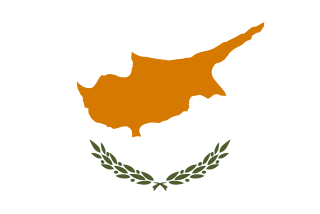
The following outline is provided as an overview of and topical guide to Cyprus:

The following outline is provided as an overview of and topical guide to Estonia:

The following outline is provided as an overview of and topical guide to Georgia:

The following outline is provided as an overview of and topical guide to Greece:

The following outline is provided as an overview of and topical guide to Italy:

The following outline is provided as an overview of and topical guide to Kazakhstan:

The following outline is provided as an overview of and topical guide to Latvia:

The following outline is provided as an overview of and topical guide to Lebanon:

The following outline is provided as an overview of and topical guide to North Macedonia:

The following outline is provided as an overview of and topical guide to the State of Palestine:

Holy See–Turkey relations are foreign relations between the Holy See and Turkey. Both countries established diplomatic relations in 1868, originally between the Holy See and the Ottoman Empire. The Holy See has a nunciature in Ankara. Turkey has an embassy in Rome.
Minorities in Turkey form a substantial part of the country's population, representing an estimated 25 to 28 percent of the population. Historically, in the Ottoman Empire, Islam was the official and dominant religion, with Muslims having more rights than non-Muslims, whose rights were restricted. Non-Muslim (dhimmi) ethno-religious groups were legally identified by different millet ("nations").
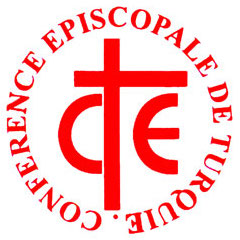
Episcopal Conference of Turkey is the committee meeting of the Catholic bishops in Turkey of the various ritual churches. It is a member of the Council of European Episcopal Conferences (CCEE), and a guest member of the Southeast European Bishops' Conferences.

